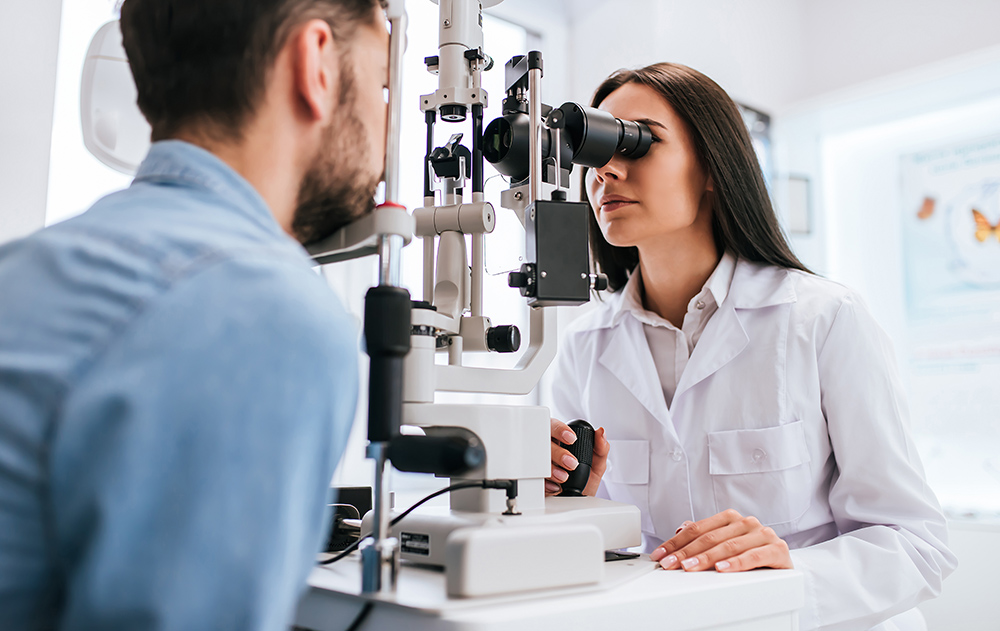


March 10, 2022
Prevent Blindness has declared March as Workplace Eye Wellness Month. Because one of the many negative effects of the ongoing COVID-19 pandemic is the increase in digital screen time for many remote workers, Prevent Blindness is raising awareness of digital eye strain and providing tips on ways to decrease the effects of increased screen time.
Symptoms of digital eye strain, also referred to as computer vision syndrome, include tired, burning or itching eyes, dry eyes, blurred vision and/or headache. To help reduce the effects, Prevent Blindness recommends:
• Place your screen 20 to 26 inches away from your eyes and a little bit below eye level.
• Use a document holder placed next to your screen. It should be close enough so you don’t have to swing your head back and forth or constantly change your eye focus.
• Change your lighting to lower glare and harsh reflections. Glare filters over your digital screens can also help.
• Get a chair you can adjust.
• Choose screens that can tilt and swivel. A keyboard that you can adjust is also helpful.
• Computer glasses with yellow-tinted lenses that block blue light can help ease digital eye strain by increasing contrast.
• Anti-reflective lenses reduce glare and increase contrast and also block blue light from digital devices.
• Take frequent breaks by using the “20-20-20” rule, as recommended by the American Academy of Ophthalmology and the and the American Optometric Association. Every 20 minutes look away from your screen and look at an object 20 feet away for at least 20 seconds. This gives your eyes a chance to reset and replenish themselves.
Prevent Blindness also recently launched its Screen Time-Out awareness campaign, created to educate consumers on the effects of increased screen time, and encourage the public to introduce regular screen breaks into their daily routines. Shareable social media graphics are available to employers to post on their social media channels or include in company newsletters.
For those who work in other settings, such as construction or manufacturing, Prevent Blindness also provides information on the importance of eye protection. According to the Centers for Disease Control and Prevention (CDC), each day approximately 2,000 U.S. workers sustain a job-related eye injury that requires medical treatment. About one third of these injuries are treated in hospital emergency departments, and more than 100 result in one or more days away from work.
The Occupational Safety and Health Administration (OSHA) requires employers to ensure the safety of all employees in the work environment. Eye and face protection must be provided whenever necessary to protect against chemical, environmental, radiological or mechanical irritants and hazards.
Safety eyewear protection includes:
• Non-prescription and prescription safety glasses
• Goggles
• Face shields
• Welding helmets
• Full-face respirators
“Healthy vision is crucial for productive work, independence, and quality of life,” said Jeff Todd, president and CEO of Prevent Blindness. “We must make our eyes a priority today to help maintain healthy eyesight throughout our lives.”
Source https://preventblindness.org/march-is-workplace-eye-wellness-month/
